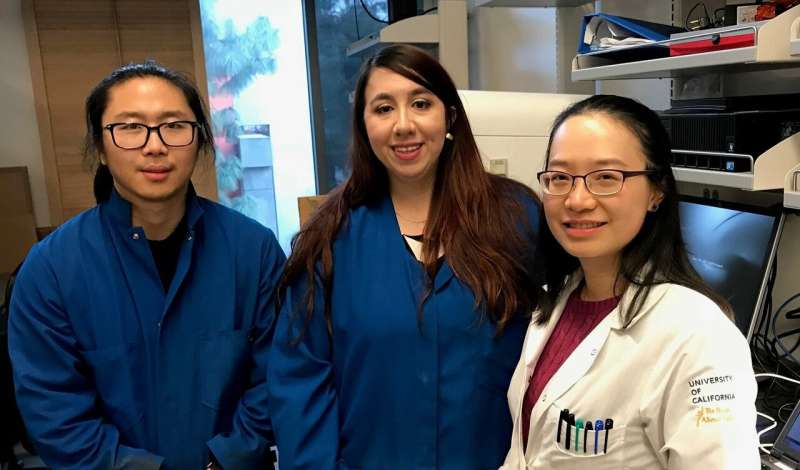Scientists identify genetic mechanism involved in how females inherit traits

As many know, females have two X chromosome while males have one X and one Y chromosome.
Perhaps less known is that female cells randomly and permanently shut off one of the X chromosomes during embryonic development through a process called X chromosome inactivation, or XCI. Just how XCI occurs has remained unclear—until now.
New research performed on mouse female embryonic stem cells by scientists at the University of California, Riverside, traces the origin of XCI to an RNA splicing mechanism.
Occurring in every human cell and almost all human genes, RNA splicing copies and pastes genetic fragments scattered among the genome to create a meaningful or functional genetic message.
In the case of XCI, the researchers found that a special splicing event occurs prior to XCI and in association with the X chromosome chosen for inactivation, but not with the other X chromosome. This special splicing event happens in "Xist," a gene expressed only in females and the inactive X chromosome.
Scientists have accepted Xist induction at the onset of XCI as the molecular trigger for initiating XCI, but how Xist is induced is not entirely clear. Also unknown is how Xist remains repressed prior to XCI. The new study shows that Xist is largely unspliced, thus unfunctional, before XCI. Upon differentiation of embryonic stem cells, Xist becomes spliced, and thus functional to kick-start subsequent events to induce XCI.
Study results appear in the journal Nucleic Acids Research.
"XCI ensures that females express similar dosages of X chromosome gene products as males do," said Sika Zheng, an assistant professor of biomedical sciences in the UCR School of Medicine, who led the research. "This inactivation ensures, too, that, like males, females have a balanced expression between the X chromosome and autosomes—chromosomes that are not sex chromosomes."
Zheng explained that XCI happens in every female, and its regulation influences whether a daughter inherits a trait from her father or her mother. It also determines females' susceptibility to various diseases, such as Fragile X syndrome and Rett syndrome.
"The splicing mechanism is fundamental to understanding trait inheritance in females," he said. "If we could manipulate which X chromosome to inactivate through splicing, we might be able to alter females' expression of their genetic traits and their susceptibility to diseases without altering their genomes. Regulating Xist transcription has been at the center of this research field for a long time. Our discovery should draw scientists' attention to splicing."
Journal information: Nucleic Acids Research
Provided by University of California - Riverside




















